
9 minute read
Spotlight
By Breana Roy
Love and Kindness
Advertisement
Dealing with the current pandemic has left many people feeling down in the dumps. But with Valentine’s Day just around the corner, it’s the perfect opportunity to spread some extra love and joy. Remind family, friends and even strangers to hang in there. And be sure to throw some kindness around like confetti.
“Comfort. Distance Hug” by Grand Marais artist Betsy Bowen. Bowen will be assembling her Comfort drawings into a book this spring, titled One Hundred Comforts. To see more, visit: woodcut.com.
| BETSY BOWEN
Lutsen artist Kari Vick created this piece with Valentine’s Day in mind, titled “No One Otter Than You For Me.” Learn more at:
karivick.com. | KARI VICK
Dryden artist Sharon Girdwood created this abstract acrylic piece,
titled “Let It Be.” To view more of her work, visit: studiogirdwood.com. | SHARON GIRDWOOD
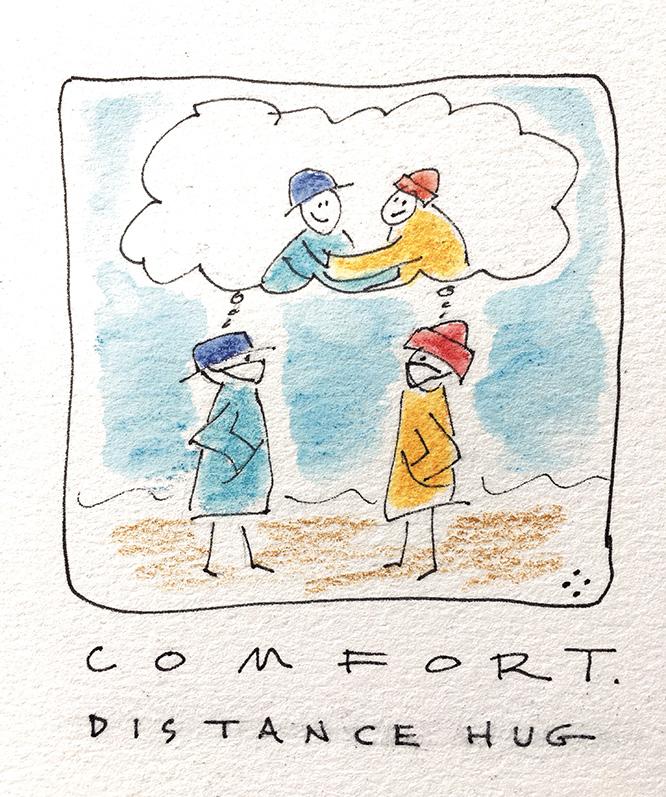

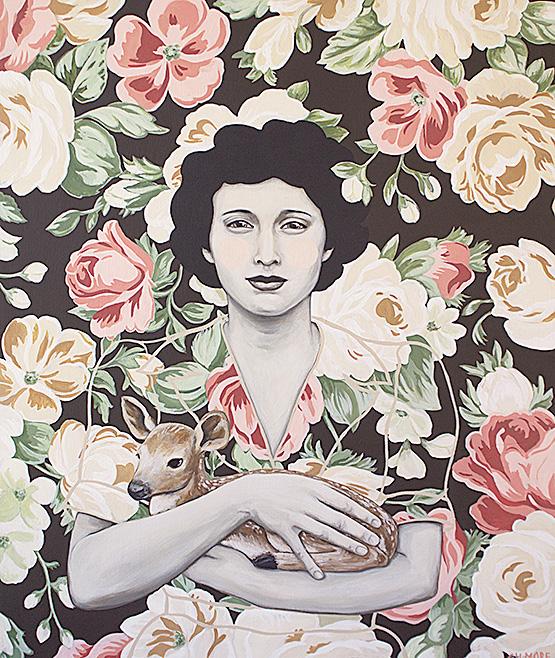
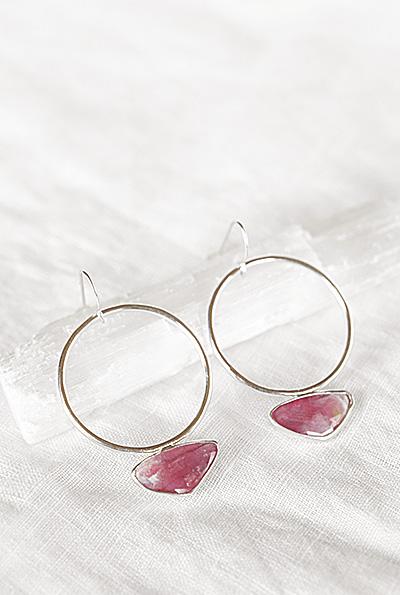
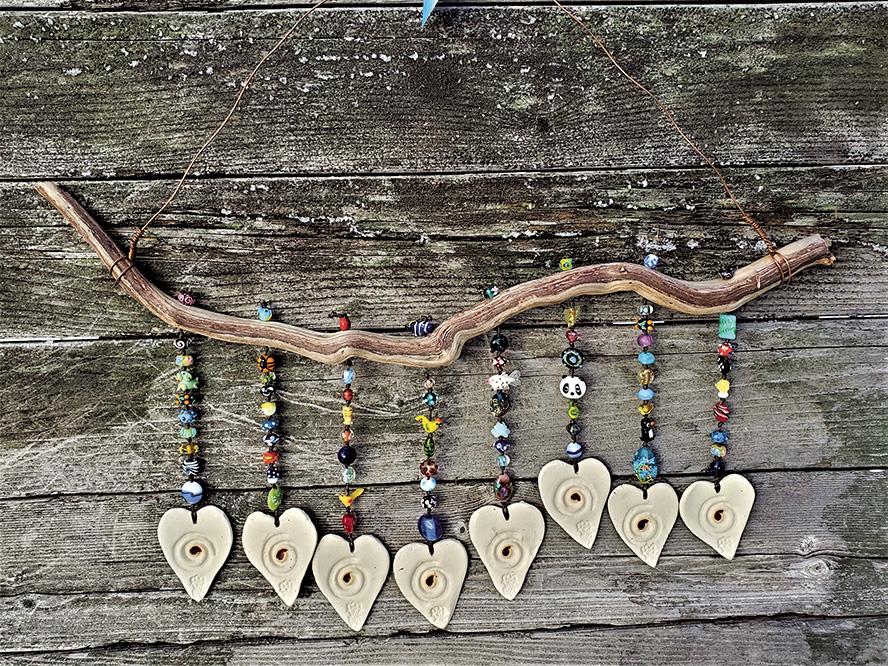
Duluth artist Louise PayjackGuillou, of Atelier and Stone, creates one of a kind jewelry, such as these pink sapphire “satellite” earrings. To view her work, visit: atelierandstone.com.
| MICHELLE BENNETT
“Faith Holding Hope” is an acrylic piece by Duluth artist Shawna Gilmore. To see more, visit: shawnagilmore.com.
| SHAWNA GILMORE

Most floor looms can make everything from delicate table linens to hardy woven rugs. It all depends on how the loom is set up, and how the weaver takes the weft into the
warp. | SUBMITTED
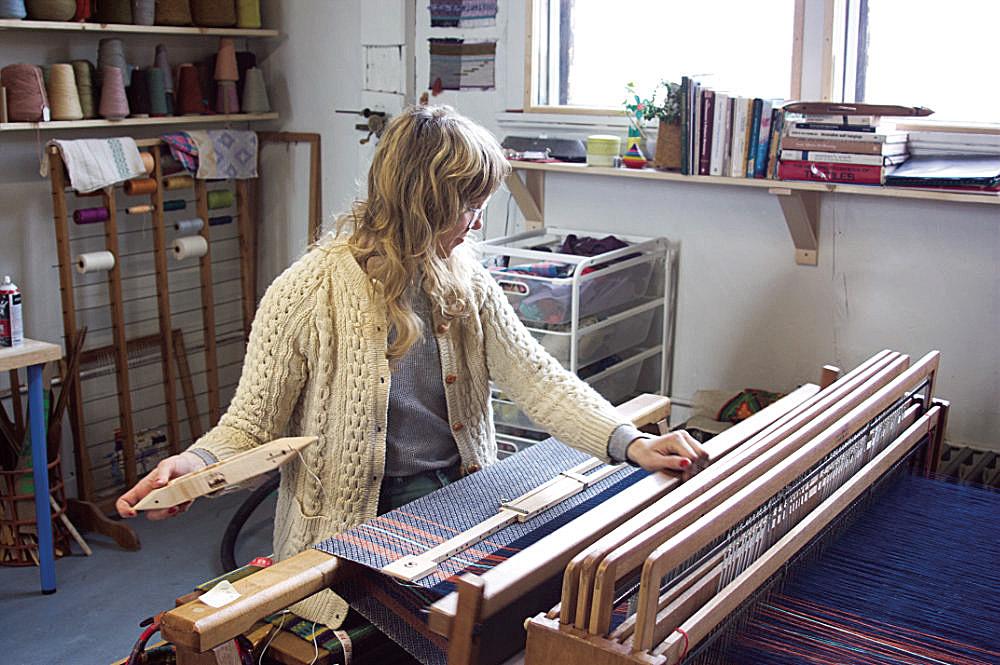
or an opening, that I can throw my weft through and begin to weave. By the time the whole floor loom is dressed, before I even begin weaving, I have touched each individual warp thread at least six times. Dressing a loom can take anywhere between three to 15 hours, and that does not include the time it takes to weave. I choose floor loom weaving because I love the problem solving of creating new patterns and woven objects, the rhythm of the movements, and the fact that I can involve my whole body in the process. Both of my feet are working to press down treadles to lift warp threads. My hands and Christine Novotny primarily weaves on a floor loom, which allows for versatility and efficiency in producing woven textiles. | SUBMITTED arms are moving in a steady rhythm as I throw the shuttle across my warp. I also love the endless amount of options available in floor loom weaving and the relaFloor Loom Weaving tive simplicity that the weaver discovers in what seems like an incredibly complex system. I am always thrilled to show people how a floor loom works for the first time. The loom looks so daunting, but once the BEHIND THE CRAFT: Christine Novotny machine is demystified, you can relate it to the simplest weaving we know. Over
The clothes we wear, the towels that less combination of materials and colors. treadles to the harnesses. The treadles are under, over under, one thread at a time. dry our hands, the curtains that shield us Most floor looms can make everything foot pedals that sit below the weaver at Christine Novotny is a weaver in the from excessive sunlight—all these textiles from delicate table linens, to hardy woven the front of the loom. When I push down Artisan Development program at North are created with a few methods of produc- rugs. It all depends on how the loom is set on a treadle, it can lift a combination of House Folk School, where traditional craft tion, one of which is weaving. Weaving up, and how the weaver sets the weft into harnesses, which in turn lifts warp threads. is taught on the shore of Lake Superior. is among the oldest of cloth production, the warp. Lifting the warp threads creates a shed, with the first woven linen pieces dating back to 5000 B.C. Weaving is a simple method where yarn interlaces yarn at right angles to build up a cloth. The two yarns are called warp and weft. The warp runs vertically, organized neatly with consistent spacing. The weft is the yarn used for weaving. The weft thread runs over and under warp threads to build the cloth thread by thread. I primarily weave on a floor loom, which I often liken setting up a floor loom to programming a computer. I begin by making several choices—what I’d like to make, what material it will be, the pattern, and the feel of it. Then I set up the loom to effectively weave it. I measure the warp on a warping board, and then chain the long threads and bring them to the loom. From there, I attach the warp to the back of my loom and wind it evenly onto the warp beam. The warp beam stores the excess SUPPORT LOCAL MUSICIANS: The Tip Jar allows for versatility and efficiency in pro- warp while I’m not weaving on it. ducing woven textiles. Floor looms are large boxy-looking pieces of machinery meant to store excess warp, keep threads under tension, and provide a mechanized system for lifting warp threads in particular order so the weft can travel through them. Once the excess is wound, I sit at the front of my loom and thread each individual warp thread through the eye of a heddle. The heddles are metal or cloth pieces suspended on a harness, a large frame that houses groups of heddles. I follow a weavGRAND MARAIS—Mary Somnis, EDA executive director and WTIP board member, suggests it would be helpful to Cook County musicians if businesses in the county would stream WTIP’s local music programming into their establishments on “WTIP has received awesome responses from listeners and musicians. It is just wonderful that our community can experience this great uplifting right now, when everything is so hard,” says Somnis. “I received this suggestion from someone:
Weaving is really simple binary code— ing draft that gives me the sequences to Fridays from 4-7 p.m. ‘How cool would it be if ... businesses all warp thread up, or warp thread down. When the warp threads are lifted, the weft travels under them, and we will see the warp instead of weft on the cloth. When the warp threads are lowered, the weft covers them, and we will see the thread each thread. One thread through the first harness, one through the 3rd harness, one through the 2nd harness, on and on until I’ve completed the threading. Next, each warp thread goes through the reed of the beater, which keeps the warp That programming is in support of The Tip Jar, an effort by WTIP, with support of the Chamber foundation, to raise money for Cook County musicians, who have suffered income losses due to the pandemic. over Cook County would live stream the Tip Jar MiniFest from 4-7 p.m. for the next several Fridays?’” Make a donation to The Tip Jar online at: cookcountychamber.org/musicians_fund. weft instead. In every pick of weaving, threads spaced out evenly at the width I’m Donations are lagging, and Somnis thinks a different combination of warp or weft looking for in my woven piece. that streaming the programming into busivisibility is created. In that simplicity one can create a myriad of patterns in an endFinally, the warp is attached to a rod at the front of the loom, and I tie up the nesses might encourage more people to donate.
Charlie Parr Signed by Smithsonian Folkways CREATIVE SPACE: By Eric Chandler

Charlie Parr has recorded 13 albums in his career.
| SHELLY MOSMAN

Duluth-based musician Charlie Parr signed with Smithsonian Folkways in the autumn of 2020. Parr plans to release a double album of 12 new songs with the label in June 2021. Smithsonian Folkways is the non-profit record label of the Smithsonian Institution. Their stable of recording artists includes legends like Woody Guthrie and Pete Seeger.
In his youth, Parr listened to a lot of music recorded by Folkways Records, which was absorbed by the Smithsonian in 1987. He still seems awestruck by the news.
“I haven’t been able to process it yet. You know, this whole thing happened in the pandemic and it almost doesn’t feel real,” said Parr. “If I go to my record collection right now, fully half to maybe even two thirds of this collection of music is on labels that are either Smithsonian Folkways, or Folkways or some other kind of related label. This is music that I listened to my entire life. My dad had Folkways Records in his collection.”
Parr recorded tracks of music in Minnesota in November and the 12 new songs are taking shape with the album’s producer. Parr said this recording experience was a departure from his normal studio behavior.
“What I’ve done in the past is I’ve recorded everything live in a studio. Just play it, have a microphone there, and it records it. That’s the record. This time we decided to do things differently and Smithsonian was really encouraging about this. I recorded a bunch of different vocal tracks, guitar parts, different things. And all that stuff is currently in Durham, North Carolina. Brad Cook is taking it and mixing it all down to what’s going to be the record,” said Parr. “This week, I’ll have an opportunity to hear rough mixes and collaborate with Brad and see how I feel about it and what needs to happen with it. With the pandemic, that’s the best way we could figure out how to do this.”
By press time, Parr will have completed five live streaming concerts on Sundays in January from the stage of First Avenue in Minneapolis. But Parr is looking forward to playing concerts with in-person audiences again.
“By the end of June, it’ll be released. Hopefully, I’ll be able to at least play outdoor shows by that time to kind of celebrate,” said Parr.
Parr has recorded 13 albums in his career and his fans are looking forward to this new addition in 2021. Parr himself seems especially grateful for this new recording.
“I think, as the pandemic eases, I’ll be able to get back to what it is that I like to do, which is play shows and be on the road. Then, at that point, I’ll have to kind of reckon with it, especially around the time that the record comes out. Because when I actually see a record with both my name and Smithsonian’s name on it, that’ll hit home a lot harder.”










